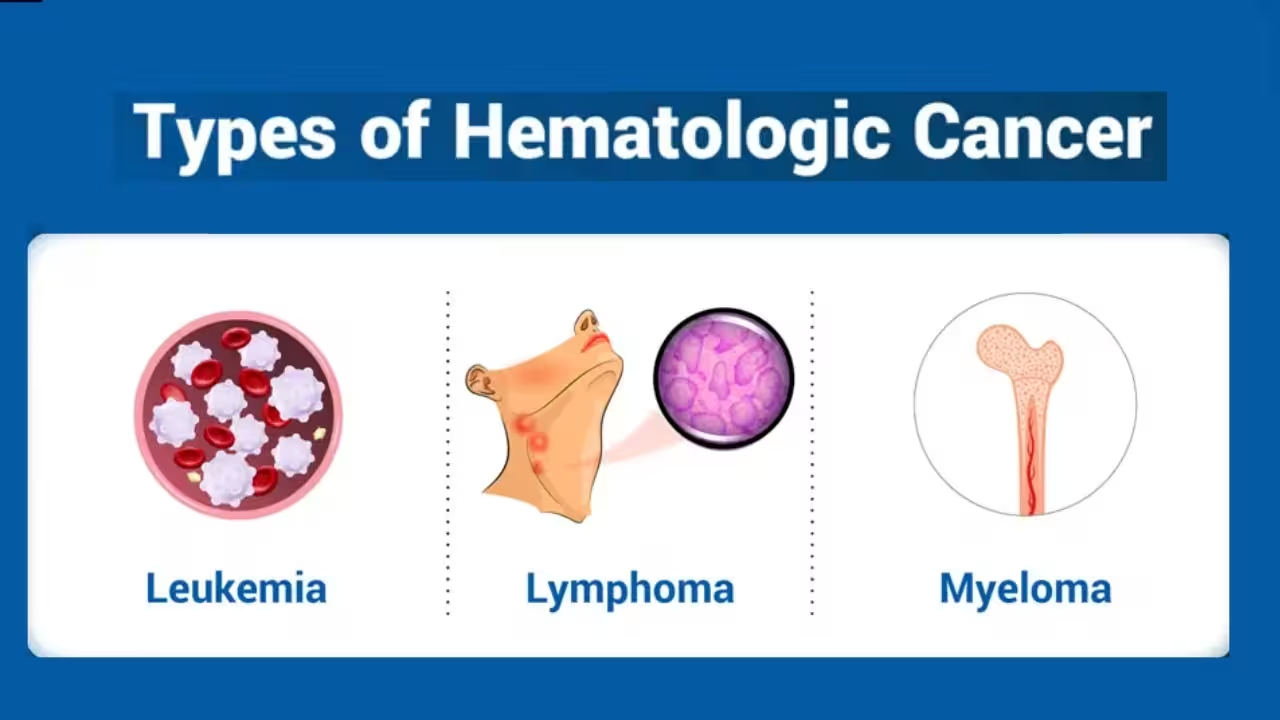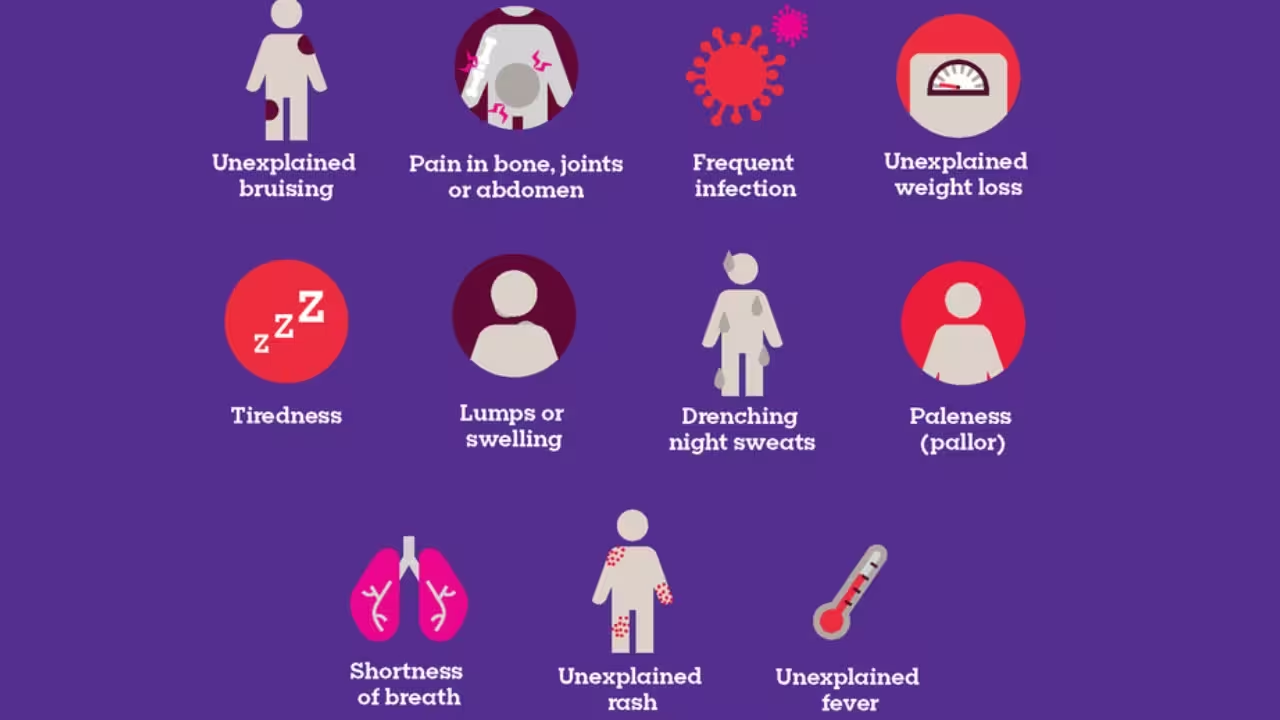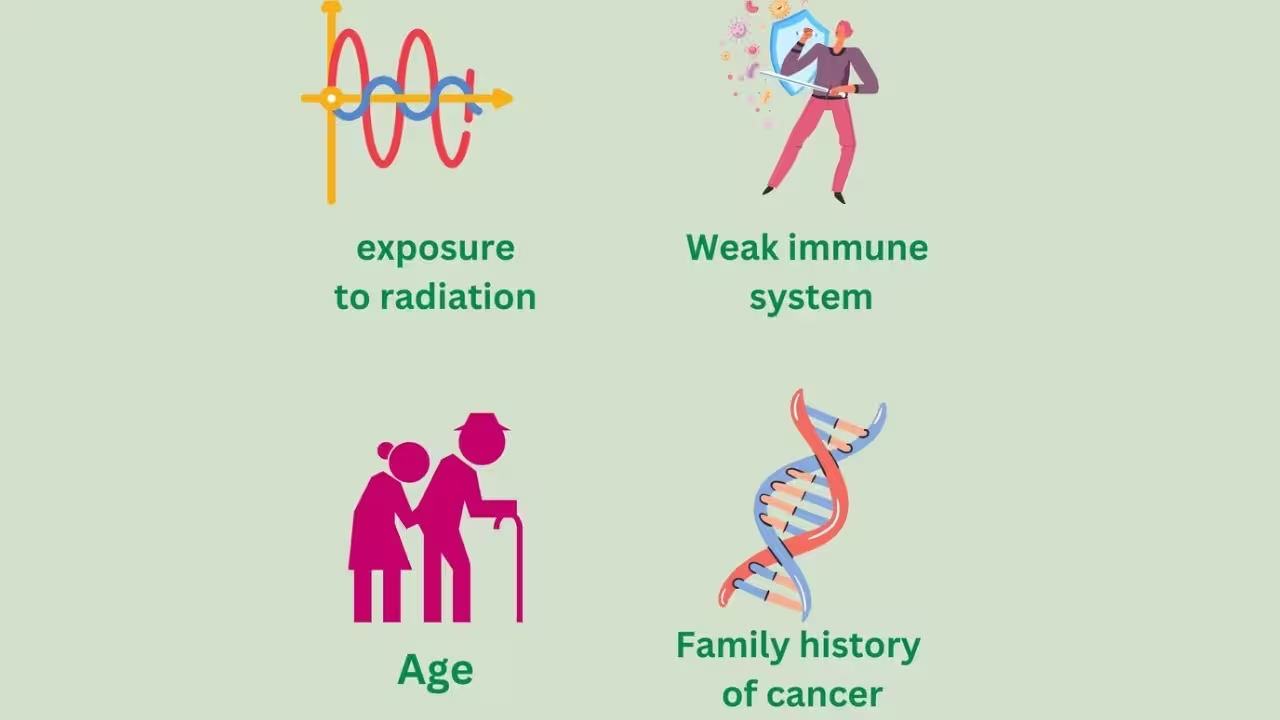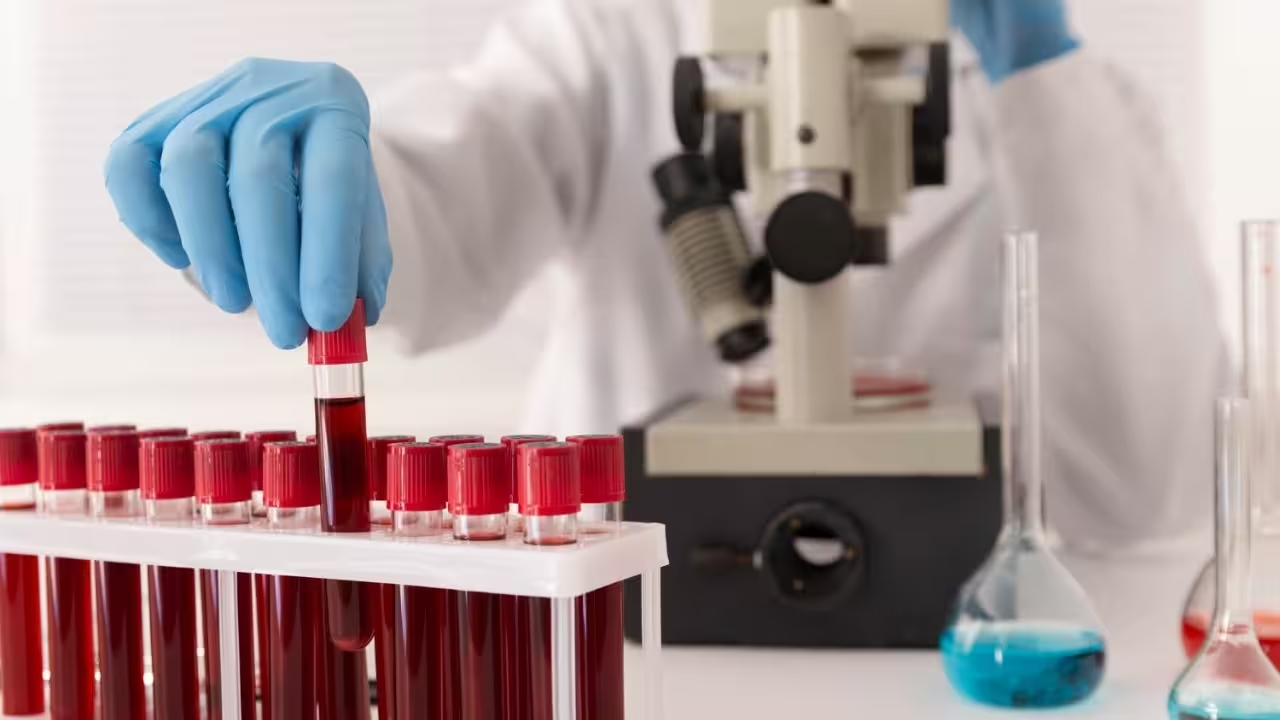
Blood cancer isn’t just one disease - it’s a whole category that messes with how your blood cells are made and how they work. Sounds intense, right! But don’t worry - we’re breaking it all down in plain, simple language.
From what blood cancer actually is, to how it shows up in the body, what tests detect it, treatment options, and even how to live with it - this blog covers everything you need to know. Whether you're just curious, revising for exams, or trying to understand a loved one’s condition, this guide’s got your back.
Blood cancer happens when your body starts making damaged blood cells that grow out of control. Most of the time, this starts in your bone marrow, which is the soft part inside your bones where new blood cells are made. Sometimes, it can also start in your lymphatic system, which helps fight infections.
.avif)
Normally, your body keeps a balance by making three main types of blood cells:
But in blood cancer:
So yes, blood cancer isn’t just about “blood.” It’s about what’s going wrong where your blood is actually made - deep inside your bones.
Blood cancer isn’t just one fixed thing. It’s actually a group of diseases, and each one messes with your body in its own way. The three main types are: Leukemia, Lymphoma, and Myeloma - and here’s how they’re different:

This type begins in the bone marrow and mostly targets white blood cells. These are supposed to fight infections, but in leukemia, your body starts making damaged ones that grow too fast and don’t protect you.
This one begins in the lymphatic system - the part that filters your blood and fights germs. It attacks lymphocytes, which are a type of white blood cell.
Myeloma affects plasma cells in your bone marrow. These cells normally help you fight infections, but in this case, they go rogue.
So even though all three fall under “blood cancer,” they don’t work the same way. Knowing the type helps doctors decide the right tests and treatment - and helps you understand what’s going on in the body.
Blood cancer doesn’t always show big, obvious signs in the beginning. But your body does drop small hints. Here are some common symptoms that usually show up - explained simply:

This isn’t your usual "I stayed up too late" kind of tired. It’s the kind where you feel drained even after sleeping well. That’s because blood cancer can lower your red blood cell count - and those cells carry oxygen. Less oxygen - less energy.
If you’re catching infections a lot or running a fever without reason, it could mean your immune system is weak. Blood cancers often affect white blood cells - the ones that fight germs.
Getting bruises easily or bleeding more than usual (like nosebleeds or bleeding gums)? That can happen when your platelets are low - and platelets help your blood clot.
Feel a soft, painless lump in your neck, armpit, or groin? That could be a swollen lymph node, and it’s one of the signs seen in some types of blood cancer, especially lymphoma.
If your bones or joints hurt - and it’s not from exercise or falling - it could be a warning sign, especially in cancers like leukemia or myeloma that affect your bone marrow.
If you’re not dieting but still dropping weight, and waking up drenched in sweat even when it’s cool, don’t ignore it. These are signs your body is fighting something off.
Feeling out of breath after just a short walk? Or noticing you’re looking paler than usual? It might mean your body isn’t making enough healthy red blood cells - another common effect of blood cancer.
Blood cancer sounds scary - and the word “cancer” instantly makes us think of something major. But here’s the thing: blood cancer usually starts when something goes wrong in how blood cells grow. Let’s break it down:

This is the core cause. When the DNA inside your blood cells gets damaged or changes randomly, it can mess with how your cells grow and divide. Instead of dying when they should, these faulty cells keep multiplying - and that’s how cancer begins.
Sometimes your immune system either doesn’t catch the bad cells early or behaves weirdly (like attacking your own healthy cells). This can lead to abnormal blood cell production - especially in certain types of leukemia and lymphoma.
Being exposed to too much radiation or certain toxic chemicals (like benzene found in factories or smoke) over time can raise your risk. But this isn’t very common for most people.
Blood cancer can run in families. If someone close in your family has had leukemia or lymphoma, it slightly increases your chances too. Doesn’t mean you’ll get it - just that you should be a bit more alert.
Some viruses (like Epstein-Barr virus or HIV) can increase the risk of developing blood-related cancers later. They weaken or interfere with how blood cells work.
Not always. a lot of these causes are out of your control - they’re about how your body’s internal system behaves. But staying healthy overall, avoiding toxic exposure, and catching symptoms early can help big time.
If someone keeps feeling tired, gets sick often, or notices weird bruises - doctors don’t just ignore it. They run a few important tests to find out what’s really going on.

Here’s what happens step-by-step:
This is the basic test doctors do first. It checks:
A messed-up CBC report is often the first clue.
This one confirms if blood cancer is actually there. Doctors:
It sounds intense, but it's super important.
These scans give doctors a look inside your body. They:
PET scans are especially helpful when doctors are tracking cancer activity.
These are more detailed lab tests. They help doctors:
This is like customizing treatment to fit you, not just the disease.
If your lymph nodes are swollen, a small tissue sample is taken:
Basically, diagnosing blood cancer isn’t a one-test thing. It takes a combo of tests to get the full picture and plan the right treatment.
Once someone hears they’ve got blood cancer, the next big question is: what’s the treatment going to look like? It honestly depends on the type (like leukemia, lymphoma, or myeloma), how far it’s spread, and the person’s overall health.

here’s a simple breakdown of what treatment usually includes - no confusing stuff:
Most people don’t just get one treatment. It’s usually a combo, planned out by doctors based on what’s best for the person. and , it’s a lot - and it’s not easy - but with proper care, recovery is possible.
Let’s be honest - living with blood cancer isn’t just about the treatment. It changes everything - your routine, your energy, even your mindset. But people do get through it, and here’s what usually helps along the way:
.avif)
Living with blood cancer is hard, no sugarcoating that. But people who’ve been through it say - what really helps is being kind to yourself during the whole journey.
